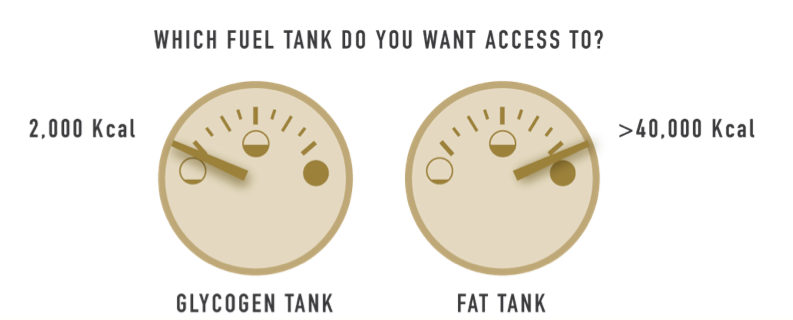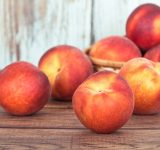Selecting an energy bar from the seemingly endless available options can be quite daunting. We see sports nutrition bars being sold with labels promising “energy” and “performance” despite containing over 20 grams (or 5 teaspoons) of sugar per serving. Not to mention liquids sports drinks, often containing almost 9 teaspoons of sugar in a 20-oz serving. A low-sugar fueling approach is a healthier option for any athlete in training.
When athletes combine two high-sugar solid and liquid nutrition sources, they could be ingesting up to 14 teaspoons of sugar in one hour! During a long training or race day, they may feel an initial energy boost with simple carbohydrates, but shortly afterward they may feel an energy crash and have an increased chance for gastrointestinal distress (“GI Distress”). A 2014 study published in the Journal of Sports Medicine (Auckland, N.Z.) reported 30-50% of athletes experience a form of GI distress, which often impairs performance and can affect recovery. Furthermore, it has been shown that among nutritional factors, a high-intake of carbohydrates (sugar) increases GI problems.
Benefits of a low-sugar fueling approach
- Stable energy levels
- Reduced need for fueling
- Less inflammation
- Faster recovery
- Leaner body composition
How can you be less dependent on sugar for fueling?
Train your body to burn fat (versus carbohydrate/sugar) as its primary fuel source. You’ll need to incorporate a healthy base diet (outlined below), filled with healthy fats, unrefined carbohydrates, and protein. When choosing energy bars, aim for 10 grams (or less) of sugar per serving. If you need an electrolyte supplement, choose one with no sugar or make your own at home.
Foods to incorporate into your diet
- Healthy Fats (at least 35% of daily calorie intake): Coconut butter/oil, olive oil,
- grass-fed butter, avocados, nuts, flax, hemp, and sesame.
- Protein (at least 20% of daily calorie intake): Organic chicken thighs, organic eggs, grass-fed beef, wild salmon, lamb, and pork.
- Low-Carb Fruit and Vegetables (remainder of calories): Asparagus, artichokes, bell peppers, blackberries, blueberries, broccoli, Brussels sprouts, cauliflower, celery, cucumber, chard, collards, endive, garlic, green beans, kale, lettuce, mustard green, mushrooms, onions, pea pods, radishes, raspberries, spinach, strawberries, and zucchini.
While at certain points of an event you may be looking for an intense energy boost, your best bet for solid performance is through a steady energy strategy, provided by an unrefined, low-sugar diet. By teaching your body to burn fat as the primary fuel source, you’ll tap into the many thousands of calories stored as fat and not be limited to the 1,800 to 2,000 calories stored as carbohydrates. Your body may need up to 3 weeks to adjust, but it’s time well spent, as you may not only drop excess body fat, you’ll be able to tap into it for fuel along the way!
Originally posted 2018-07-11 11:53:11.








